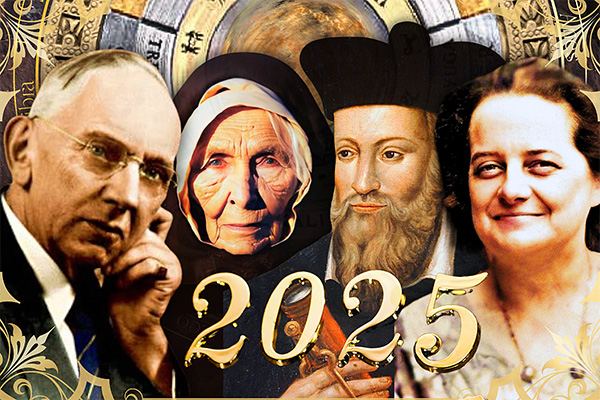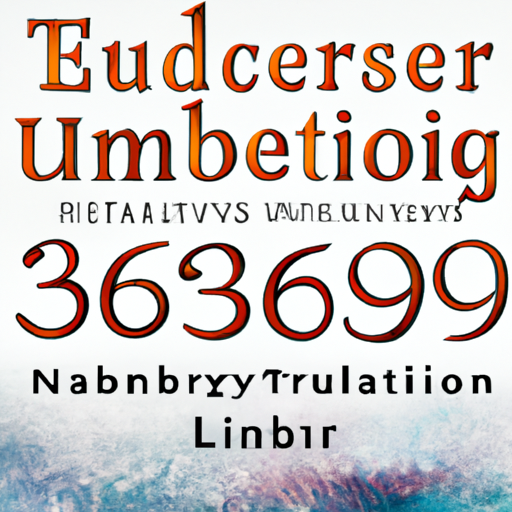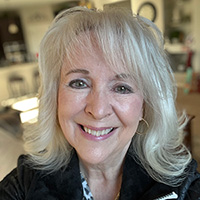Discover Powerful Abundance Practices to Attain Wealth in 2025
 The universal force of renewal and endless opportunity calls to us as we approach the year 2025. The start of a new year offers an excellent opportunity to let go of past energies that no longer benefit us and to welcome a fresh influx of abundance, prosperity, and fulfillment into our lives.
The universal force of renewal and endless opportunity calls to us as we approach the year 2025. The start of a new year offers an excellent opportunity to let go of past energies that no longer benefit us and to welcome a fresh influx of abundance, prosperity, and fulfillment into our lives.
Practicing manifestation at the New Year not only helps clarify and align our aspirations from the outset but also releases energetic obstructions, allowing prosperity and wellness to thrive. Letting go of the old makes way for new opportunities and possibilities to enter our lives.
The contemporary notion of establishing intentions or “New Year’s resolutions” has origins in diverse traditions. For centuries, various cultures across the globe have celebrated the transition to a new year with spiritual, esoteric, and religious rites and ceremonies.
For instance, in Mesopotamia, the Akitu festival marked the Spring Equinox as the commencement of a new year, featuring rituals to honor deities and ensure a fruitful harvest.
In Babylonia, at the onset of each new year, individuals made vows to their gods to return borrowed goods and settle their debts. These vows symbolized a fresh start and maintaining good standing with higher powers.
The ancient Romans continued this tradition by dedicating January to Janus, the dual-faced god who gazed both backward at the past year and forward to the new one, creating a period for personal introspection and new beginnings.
Everything you desire is out there waiting for you to request it. Everything you desire also desires you. However, action is necessary to achieve it ~ Jack Canfield
In China, the Lunar New Year is celebrated through various customs including house cleaning to remove bad luck and ward off malevolent spirits, along with decorations in red to manifest prosperity and joy. Diwali, the Hindu festival of lights, although not a universal New Year celebration, embodies similar themes of cleansing and inviting abundance through rituals like lighting oil lamps (diyas), representing the triumph of light over darkness and good over evil, while offering prayers to Lakshmi, the goddess of wealth.
Mystical traditions, including those linked to paganism, wicca, and the occult, often regard the winter solstice as a moment of renewal. The solstice signifies the sun’s rebirth, a powerful emblem of new beginnings. Rituals associated with Yule involve burning logs, decorating with evergreen foliage, and setting goals for the upcoming year.
In contemporary contexts, New Year’s resolutions have broadened to encompass goals for personal development, health, and wellness, among other aspirations. Yet, the spiritual aspect persists, as many individuals take this period to reflect on their lives and articulate meaningful goals for the new year.
Personally, I find the start of a new year particularly advantageous for setting new intentions as part of my manifestation process. Indeed, after completing my New Year’s spiritual routine last year, I underwent an extraordinary financial transformation.
Beginning in 2024, I documented specific objectives, including target income and plans for business expansion. I conducted a clearing ritual to dispel doubt and fear, then established an abundance altar with significant items. I diligently visualized success and maintained a gratitude journal. By late February, fresh opportunities began to emerge!
An essential moment occurred when I felt encouraged to attend a networking event. There, I encountered a vital collaborator who aided in expanding my business offerings, resulting in a substantial financial breakthrough. By the middle of the year, I had exceeded my income target, affirming the effectiveness of aligned intentions and a consistent manifestation practice.
Good intention guarantees success in everything you undertake. Intention is perpetually backed by universal energy as it’s a critical component for manifestation ~ Hina Hashmi
<pConsider exploring these transformative manifestation rituals and practices to embrace the New Year with an open heart, mind, and spirit that welcomes abundance, prosperity, and personal achievements in 2025:
Cleansing Ritual: Refreshing Your Energy
To draw in abundance, fulfillment, and new possibilities, it’s essential to shed any lingering energetic burdens. A space-clearing ritual can be a powerful starting point. Burn sage, palo santo, or incense to purify your living space. As the fragrance envelops the area, focus on the intention to eradicate stagnant energies and create space for fresh, positive vibrations.
For personal cleansing, a salt bath infused with essential oils like lavender or eucalyptus can be grounding and revitalizing. Imagine any negativity dissolving and washing away while you soak. Upon emerging, feel rejuvenated and ready to receive.
Another impactful method is to incorporate moon water into your cleansing bath. The optimal lunar phase for creating magical moon water is during the full moon, occurring on January 13th. The full moon brings heightened energy and manifestation potential, making it perfect for infusing water with lunar energy. Fill a glass or jar with purified water and take a moment to focus on your intentions for what you wish to manifest. Place the container outside or on a windowsill to absorb the moonlight overnight.
Sound Healing: Removing Vibrational Barriers
Sound has the capability to eliminate energetic blockages and elevate your vibration. Utilize a singing bowl, tuning fork, or even a playlist of high-frequency music to cleanse your space and energy field. Imagine that as the sounds resonate throughout the room, they dissolve barriers and pave the way for abundance to flow smoothly.
Abundance Altar: Grounding Your Intentions
Establishing a sacred area devoted to manifestation serves as a concrete way to ground your intentions toward attracting abundance and prosperity. Assemble an abundance altar using items that signify wealth, prosperity, and fulfillment, such as citrine or pyrite crystals, green candles, fresh flowers, and a bowl of coins or symbolic bills. Write down your financial aspirations on a piece of paper and place it on the altar. Spend a few moments each day envisioning these goals as if they are already coming to fruition and feeling gratitude for the abundance entering your life.
Candle magic can enhance your abundance altar significantly. Opt for a green or gold candle, associated with abundance and prosperity. Carve symbols or phrases like “abundance” or “wealth” into the wax. Anoint the candle with essential oils such as cinnamon or bergamot, lighting it while visualizing your desires materializing. Allow the candle to burn safely, releasing your intentions to your higher power or the universe.
Sacred Geometry: Forming An Attraction Grid
Sacred Geometry employs specific patterns to concentrate energy and amplify intentions. Create an abundance grid by arranging crystals such as clear quartz, citrine, and green aventurine into a geometric design on a specified surface. Position your written aspirations in the center and meditate on the grid, envisioning it as a vortex of prosperity attracting abundance into your life.
New Moon Ritual: Utilizing Lunar Energy
The optimal time to execute a New Year’s Lunar Ritual is during the New Moon. This phase signifies new beginnings, fresh starts, and intention setting. It’s a potent moment to focus on your manifestation aspirations for the approaching year and plant the seeds for your dreams and targets.
During the New Moon, engage in a ritual to state your intentions and visualize their fruition, release negative energies or outdated habits, and invite new opportunities by crafting a welcoming environment for fresh experiences and positive shifts. Include a list of your objectives and aspirations for the coming year while affirming your faith in the Universe’s ability to provide.
If you didn’t get to harness this magical lunar energy with the recent New Moon on December 30th, there’s no need to worry. The next New Moon will occur on January 29, allowing ample time for preparation.
Gratitude Ceremony: Attracting Manifestation
Gratitude stands as the most potent energy magnet for abundance, and there’s no better time to conduct a ritual to appreciate the blessings of the past year and plant seeds for the abundance, healing, and growth you wish to realize in the New Year. A Gratitude Ceremony empowers you to step into the New Year with clarity, thankfulness, and purpose.
Start by crafting a sacred space and cleanse it with sage, palo santo, or incense. Adorn the area with white candles symbolizing new beginnings and affirming crystals like citrine for abundance, prosperity, and joy; clear quartz for amplification, clarity, and energy; or amethyst for spiritual awareness, heightened intuition, and energy protection.
Ignite the candles and state, “I call upon Spirit, Source, and the Divine, inviting the universal energies of light and renewal. As the old year comes to a close and the new year commences, may my heart be thankful and my thoughts positive.” Take a deep breath and visualize roots extending from yourself into the earth. Feel the support and connection.
Next, jot down seven things you are profoundly grateful for from the past year. Choose the most memorable and life-enhancing individuals, experiences, lessons, and gifts from 2024. After each entry, place your hands over your heart and express: “I honor this blessing with love and gratitude. I am grateful and thankful.”
Now grasp your chosen crystal in your hands, close your eyes and visualize what you wish to create in the following year. Imagine the sensation of those dreams coming true. Solidify your intentions by stating: “With gratitude as my foundation and love as my guide, I align with my highest good.”
Then offer thanks to your Higher Power and the Universe: “With a heart full of gratitude, I embrace the blessings of this new year. May I walk in alignment, abundance, and grace.” Conclude your ritual with a small act of generosity or kindness, such as leaving a gift for nature outside, like seeds or fruit for birds, or making an online contribution to a charitable organization that resonates with your heart.
The Vital Element Of Action
Ultimately, bear in mind that while spiritual rituals and manifestation practices lay the energetic groundwork, taking practical action is equally crucial. Maintain awareness of intuitive prompts, signs, and synchronicities, and take inspired steps toward your objectives. Whether it’s reaching out to a potential collaborator or delving into a new skill, these actions not only reinforce your commitment to co-creating abundance with the Universe but also activate the wheels of attraction. The initial steps of manifestation always commence with you. Act, and the Universe will react.
The onset of a new year presents an enchanting opportunity to reset and recalibrate. By committing yourself to these transformative rituals and following through with aligned actions, you can release the past and embrace a year filled with well-being, prosperity, and fulfillment. Remember, abundance and joy are your inherent rights. Step into 2025 with the assurance that the Universe is eager to co-create it alongside you.
|
Priscila’s intriguing intuitive journey reminds us that embracing one’s true calling often necessitates bravery and perseverance, yet the benefits are immeasurable. This bi-lingual, former college professor now a professional psychic reader, is a naturally gifted psychic, an expert empath, twin flame, intuitive medium, career coach, and channeler, raised in Costa Rica. Having made the bold choice to leave her academic path, Priscila welcomed the spiritual gifts that were both her calling and passion, embarking on an entirely new life chapter that neither she nor her loyal clients will ever regret. From her residence in New England, and with an expanding online footprint, Priscila provides psychic insights and channeled messages from otherworldly sources that are clear, concise, and transformative. It’s no surprise that Priscila is considered an incredibly accurate reader with a solid and growing client base. Her clients receive clear insights that help alleviate burdens and align their souls. Her joy in assisting individuals in resolving their challenges is immeasurable. If you seek a safe, compassionate environment to embark on your own courageous new journey, you can connect with Priscila at PsychicAccess.com. |
Title: Discover Impactful Abundance Rituals to Attain Prosperity in 2025
Introduction:
As we near the year 2025, many are looking for methods to manifest abundance and prosperity in their lives. While diligence and resolve are essential, engaging in effective abundance rituals can greatly amplify our likelihood of achieving success. Grounded in ancient knowledge and contemporary practices, these rituals assist in aligning our intentions, energy, and actions towards welcoming abundance. In this article, we will delve into some of the most impactful abundance rituals to guide you in manifesting prosperity in the year 2025.
1. Defining Unambiguous Intentions:
A pivotal aspect of achieving abundance is to define clear intentions. Spend time reflecting on your genuine desires concerning wealth, success, and overall prosperity. Documenting these intentions in a journal or creating a vision board can help visualize your aspirations. By explicitly articulating your desires, you send a potent message to the universe, indicating your readiness to accept abundance.
2. Practice of Gratitude:
Gratitude serves as a formidable tool to shift our mindset and attract abundance. Fostering a daily gratitude practice can shift our focus from scarcity to abundance. Each day, take a few moments to express thankfulness for the blessings in your life, whether substantial or minor. This practice generates a positive energy current and opens avenues for greater abundance to enter.
3. Positive Affirmations of Abundance:
Affirmations are uplifting statements that aid in reprogramming our subconscious. By regularly affirming abundance, you can transform your beliefs and mindset towards prosperity. Formulate custom affirmations that resonate with you, such as “I am receptive to receiving boundless abundance” or “Wealth flows easily to me.” Repeat these affirmations daily, ideally in front of a mirror, and trust in their capacity to materialize prosperity in your life.
4. Visualization and Mindfulness:
Visualization paired with meditation can be extremely effective for manifesting abundance. Dedicate time each day to envision yourself thriving in an abundant life. Picture the specifics of your desired lifestyle, financial freedom, and the opportunities that come from it. Engage all your senses in this visualization to enhance its vividness. Combine this practice with meditation to quiet your thoughts, increase concentration, and align your energy with abundance.
5. Assemble an Abundance Altar:
An abundance altar serves as a tangible depiction of your intentions and desires. Select a specific area in your home and adorn it with symbols of prosperity and abundance. This could encompass crystals like citrine or pyrite, verdant plants, monetary symbols, or anything that holds personal significance. Engage with your abundance altar regularly through meditation, visualization, or expressing gratitude for the abundance you already hold.
6. Actively Embrace Abundance:
While rituals and practices hold importance, it is equally vital to take actions that resonate with abundance. Foster an abundance mindset in your daily decisions by making choices that reflect prosperity. This could entail investing in personal development, pursuing new opportunities, networking, or embracing calculated risks. By synchronizing your actions with your intentions, you cultivate a harmonious energy flow that draws in abundance.
Conclusion:
As we head into 2025, implementing effective abundance rituals can drastically improve our potential to manifest prosperity. By establishing clear intentions, embracing gratitude, practicing affirmations, visualizing, forming an abundance altar, and taking consistent action, we can invite abundance into our lives. Remember, these rituals complement hard work and dedication, serving as powerful instruments to align our energy and intentions toward reaching our aspirations. Embrace these practices with an open heart and witness the unfolding of prosperity in your life throughout 2025 and beyond. Continue reading
















